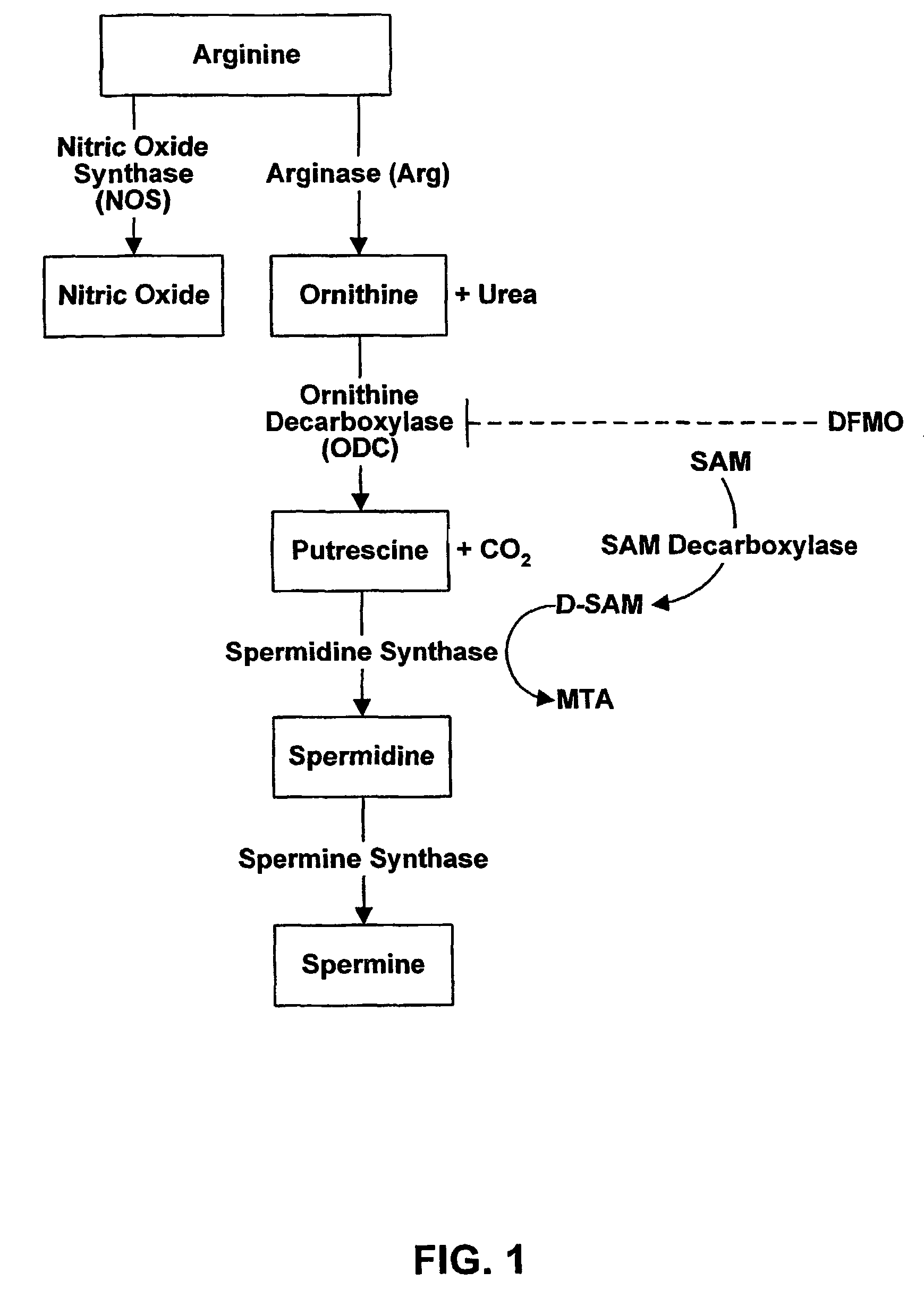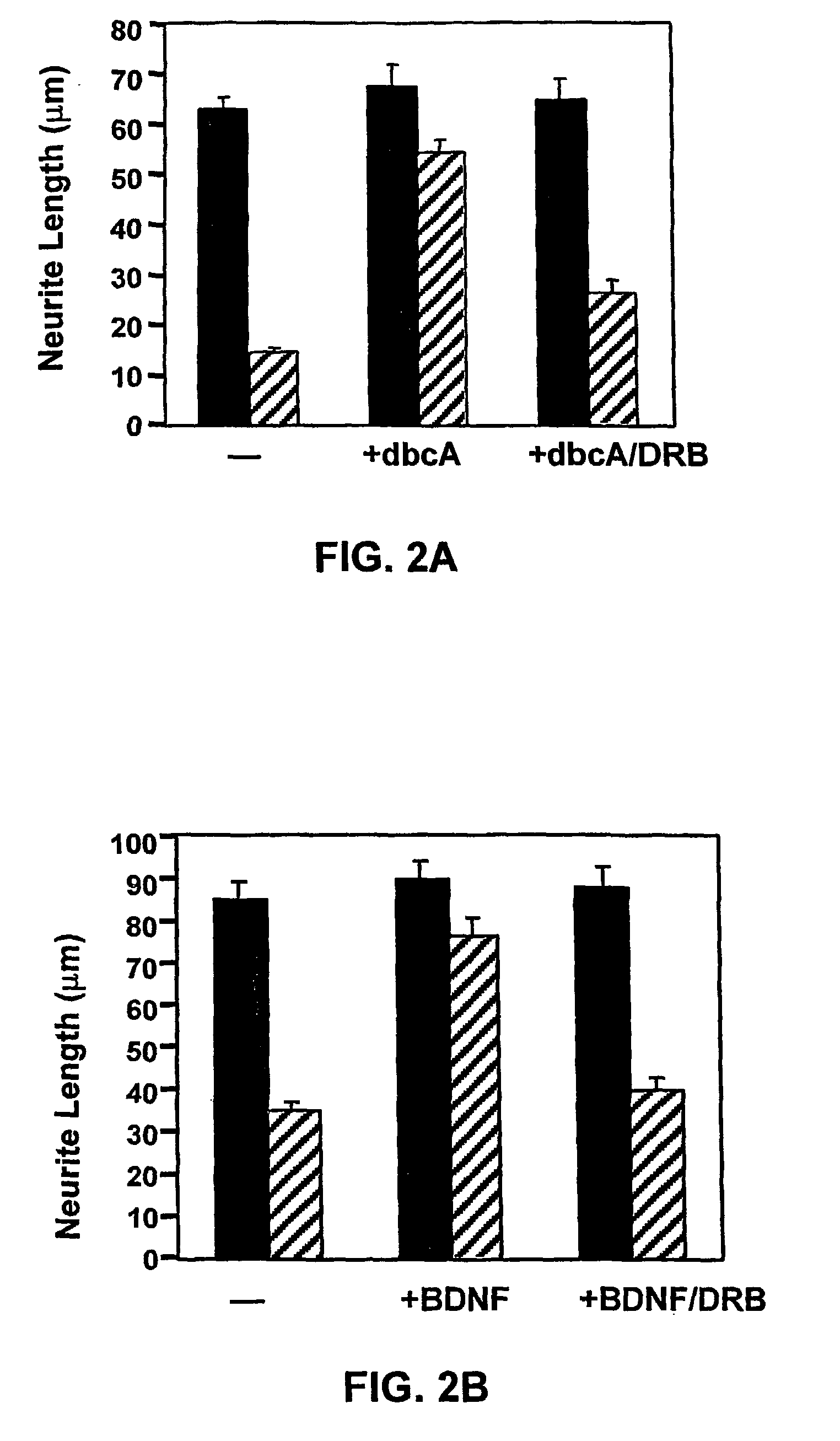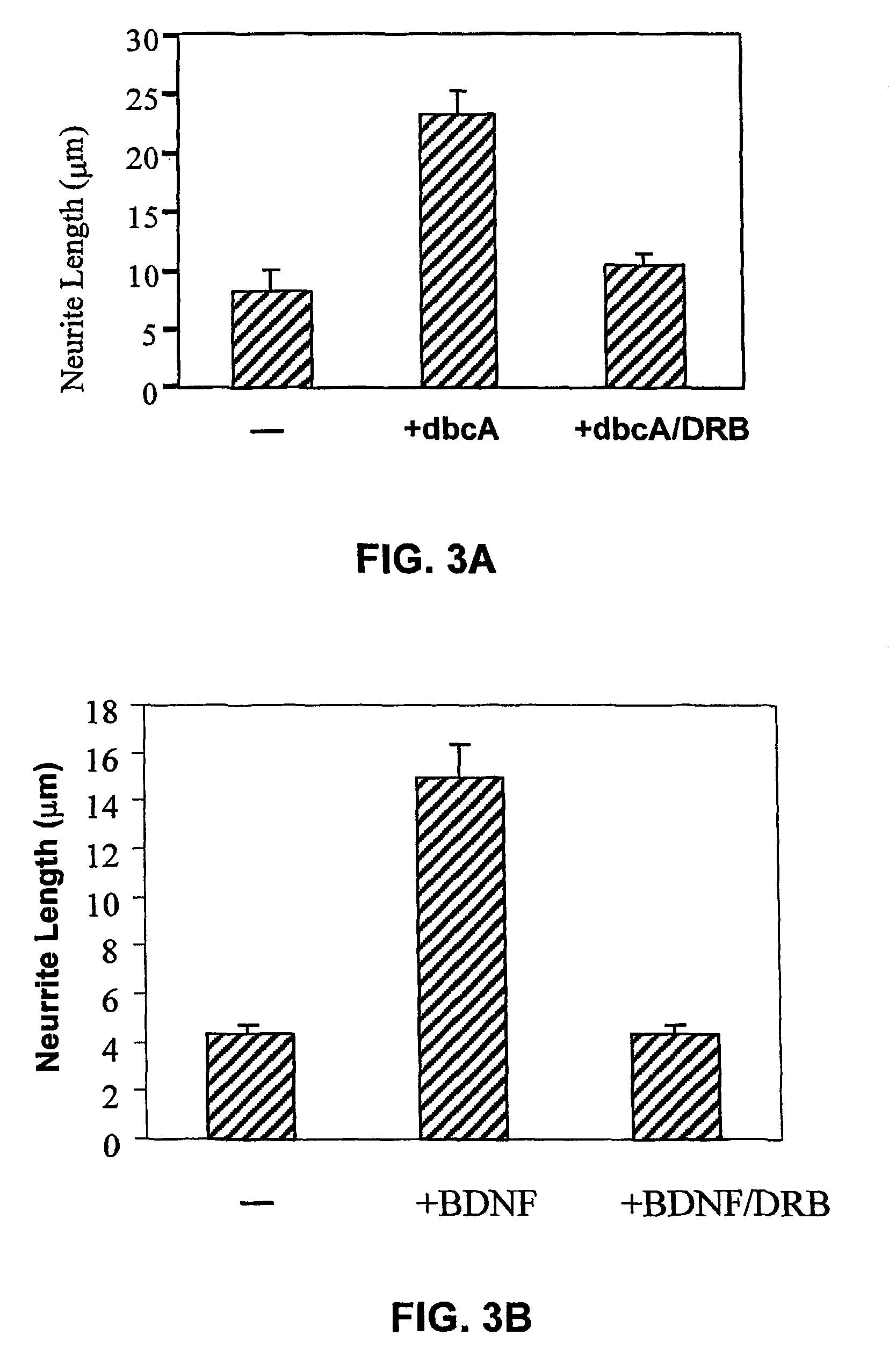Methods for stimulating nervous system regeneration and repair by regulating arginase I and polyamine synthesis
a technology of arginase and polyamine, which is applied in the direction of instruments, peptide/protein ingredients, drug compositions, etc., can solve the problems of difficult design of effective strategies to block the action of neuronal inhibitory molecules that prevent neural regeneration, and no data on the role of arginase isoforms in neuronal growth or axonal regeneration, so as to reduce the biological activity of arginase, alter neural growth or regeneration, and reduce the biological activity
- Summary
- Abstract
- Description
- Claims
- Application Information
AI Technical Summary
Benefits of technology
Problems solved by technology
Method used
Image
Examples
example 1
Neurite Outgrowth Assays in the Presence of MAG or Myelin
Isolation of Neurons
[0198]Neurons were isolated essentially as described in Doherty et al., Nature, 343, pp. 464-66 (1990); Neuron, 5, pp. 209-19 (1990); and Kleitman et al., Culturing Nerve Cells, pp. 337-78, MIT Press, Cambridge, Mass. / London, England (G. Banker and K. Goslin, Eds.) (1991). Briefly, for animals up to nine days of age, the cerebellum, from two animals were removed and combined in 5 ml of 0.025% trypsin in PBS, triturated, and incubated for a further 10 minutes (min.) at 37° C. Trypsinization was stopped by addition of 5 ml DMEM containing 10% fetal calf serum (FCS) and cells were centrifuged at 800 rpm for 6 min. The trypsinized cells were resuspended to a single cell suspension in 2 ml of SAT containing 2% FCS (progesterone, 20 nM; selenium, 30 nM; putrescine, 100 μM; insulin, 5 μg / ml; BSA 4 mg / ml; L-thyroxine, 0.1 g / ml; tri-iodo-thyronine, 0.08 μg / ml) (Doherty et al., 1990). For older DRG neurons, ganglia w...
example 2
Analyses of Arginase Expression in Neurons
RNA Extraction Reverse Transcription and PCR Analysis
[0206]Cerebellar neurons were primed with neurotrophins (BDNF, GDNF) or dbcAMP according to the procedures in Example 1. RNA and protein was extracted from primed neurons. The extracted RNA was used as a template for reverse transcription and PCR amplification using primers specific for the gene encoding the enzyme arginase I (“Arg I”), an isoform of arginase abundant in liver tissue but barely detectable in other tissues.
[0207]Total RNA was isolated from 2×106 neurons, (some of which were treated with BDNF at 200 ng / ml or dbcAMP at mM overnight) using Rneasy™ kit (Qiagen) following the manufacturers' instructions. Then cDNA was synthesized form total RNA by priming with random hexamers and adding reverse transcriptional enzyme (Stratagene) at 37° C. for 2 hr. After that, Arg1 cDNA was amplified with Arg 1-specific primers (see below) by polymerase chain reaction (PCR). The primers were ob...
example 3
Sciatic Nerve Transection And Isolation of Rat Dorsal Root Ganglia
[0214]Peripheral (sciatic) nerve transection and isolation of DRG from rats was performed essentially as described previously in Zhou, X. F. et al., J. Neurosci., 16, pp. 2901-2911 (1996) (incorporated herein by reference). Left-side sciatic nerve was transected at the mid-thigh level in P18 rats (Harlan Sprague Dawley). At different times (0.5 hr, 1 hr, 4 hr, 8 hr, 18 hr, 2 days (d), 3 d and 7 d) after the injury, DRG from the injured side (I) as well as the uninjured contra-lateral side (C) were removed, and proteins were extracted and analyzed by SDS-PAGE and immunoblotting (Western blotting) using the anti-arginase I polyclonal antibody described in Example 4. (FIG. 10). Unoperated DRG neurons were analyzed in parallel as a control (U).
PUM
| Property | Measurement | Unit |
|---|---|---|
| Biological properties | aaaaa | aaaaa |
Abstract
Description
Claims
Application Information
 Login to View More
Login to View More - R&D
- Intellectual Property
- Life Sciences
- Materials
- Tech Scout
- Unparalleled Data Quality
- Higher Quality Content
- 60% Fewer Hallucinations
Browse by: Latest US Patents, China's latest patents, Technical Efficacy Thesaurus, Application Domain, Technology Topic, Popular Technical Reports.
© 2025 PatSnap. All rights reserved.Legal|Privacy policy|Modern Slavery Act Transparency Statement|Sitemap|About US| Contact US: help@patsnap.com



